Remembering the DC-10: End of an era or good riddance?
- Published
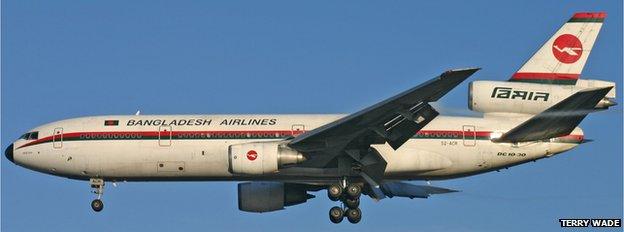
Biman Bangladesh Airlines is the last commercial carrier to use DC-10 aircraft
The DC-10, which makes its final passenger flight later, has been labelled a "death trap", external, hailed as a "workhorse" and even immortalised in a Clash song.
For some, the controversial aircraft's last landing at Birmingham Airport will mark the end of an era in consumer aviation. But how will the rest of the world remember it?
First put into service in 1971, the American-made "trijet" was one of several aircraft credited with shaping modern air travel.
But its early history was marred by several high-profile crashes as the result of a fatal design flaw.
'Horrific accidents'
A new, outward-opening cargo door did not latch properly, leaving the cabin prone to depressurising.
In 1974, a Turkish Airlines DC-10 crashed 10 minutes after taking off from Paris, killing 346 people. Modifications to all DC-10 cargo doors were ordered by the US Federal Aviation Authority (FAA)
On 25 May 1979, 271 people died when an American Airlines DC-10 crashed just after take-off in Chicago. A short-cut maintenance procedure which damaged hydraulic lines was identified as the cause.
Six days later, the plane's poor safety reputation led the FAA to temporarily ground the aircraft while manufacturer McDonnell Douglas addressed issues with the plane's design.
Even after it returned to the air, there were other high-profile incidents involving the DC-10.

A Turkish Airlines DC-10 crashed outside Paris in 1974, killing 346 people
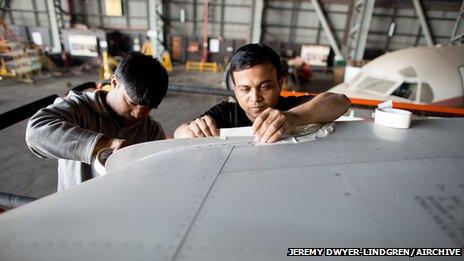
The final international flight left Dhaka for Birmingham on Thursday
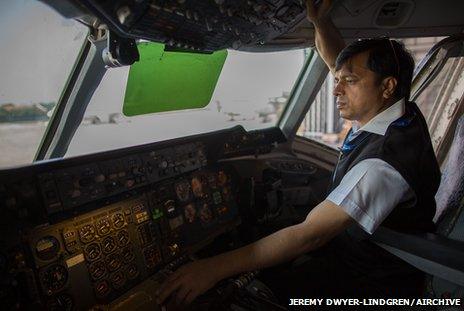
Some of the DC-10 crew will retire alongside the plane
A Fedex employee attempted to hijack one of the company's cargo planes in 1994 while a French flight was blown up by terrorists over the Sahara desert in September 1989, killing 170 people.
In total there have been 53 serious incidents, external - not all fatal - involving the aircraft.
But the DC-10 has, until this week, continued to be used to carry passengers, and, in one case, been repurposed as an airborne operating theatre, external. It also remains popular as a cargo plane.
Its expensive three-engine design has seen it gradually disappear from passenger fleets, with the USA's Northwest Airlines, which dropped the DC-10 in 2007, the last major company to use the plane.
Biman Bangladesh Airlines - the only commercial carrier still using the DC-10 - will replace its remaining aircraft with a more fuel-efficient Boeing 777.
It made a final international journey, external from Dhaka, Bangladesh, on Thursday, and will carry passengers for the final time on a one-hour pleasure flight at 15:00 GMT.
Plane enthusiast Gordon Stretch, from Solihull, travelled to Dhaka to travel on the Biman Bangladesh Airlines flight.
He pointed out that, of 446 DC-10 aircraft built, a relatively small number were involved in fatal crashes.
"There have been high-profile crashes for every type of aircraft," he said.
"They only built 20 Concordes and one of those crashed.
"I wouldn't say the DC-10 was an unsafe aircraft, there was a specific problem and the maintenance procedures at the time weren't up to speed.
"Sadly these things do happen and the only way is to learn from that."
Aviation expert Chris Yates agreed the DC-10 may have been unfairly maligned by some and too much focus placed on high-profile crashes.
"There were some pretty horrific accidents a number of years ago and ultimately it was grounded for a while," he said.
"But then it got back in the air and it was all go really."
Some say the DC-10, which was capable of carrying 250 to 380 passengers, paved the way for mass long-haul air travel.
Radio 2 presenter Janice Long worked as an air stewardess for British airline Laker Airways, whose flamboyant chairman Sir Freddie Laker introduced the DC-10 to Europe.

Laker Airways was the first British and European airline to use the DC-10
She remembers a luxurious plane where passengers had their every need attended to.
"It had a bad press at the time but I had just turned 19 when I started on the DC-10 so I had no fear," she said.
"It was fantastic; there were 345 passengers and 10 stewardesses.
"For a girl from Bootle who had never been abroad to suddenly be flying on this huge plane was just amazing."
"Laker was bringing flying to the masses, you just bought your ticket and got on the plane.
"The passengers got everything, breakfast, lunch and liqueurs and they didn't pay any extra for it."
Long is not the only person who remembers the DC-10 fondly.
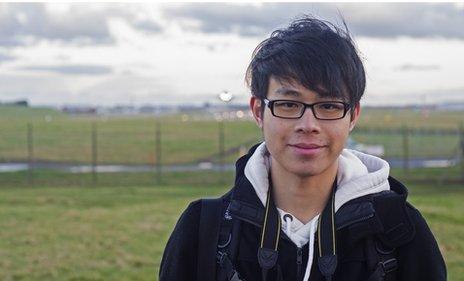
Nicholas Chiu travelled from Edinburgh to see the plane land in Birmingham

Rob Edson said he felt older planes had "more character" than modern jets
When the plane made its last international flight on Thursday, dozens of enthusiasts turned up at Birmingham Airport to watch its final landing.
University Student Nicholas Chiu, 21, originally from Hong Kong, travelled from Edinburgh.
"It's the last scheduled flight, so that's historic," he said.
"I remember this plane used to fly out of Hong Kong a lot. I last flew on one a few years ago and I didn't want to miss the last chance to see it."
Airline operations manager Rob Edson, 34, also turned up in the hope of spotting the DC-10.
"I thought it was worth coming to see it," he said.
"It's another old [aircraft] type disappearing to be replaced with a modern one.
"It's sad that they're going; they've got a bit more character than the new ones."
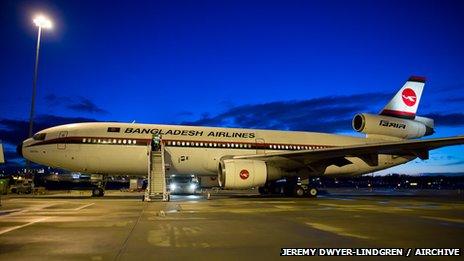
The final international DC-10 flight landed in Birmingham on Thursday
Gordon Stretch said he hoped the DC-10 would be remembered as paving the way for modern distance flight.
"It's an airliner of the first age of long-haul travel," he said.
Chris Yates said, despite its history, he believed the DC-10 would leave behind a "hell of a legacy".
"It was one of the big jets which did essentially open up long haul markets to the masses," he said.
"Without them I guess we'd be a lot further back than we are now."
- Published21 February 2014